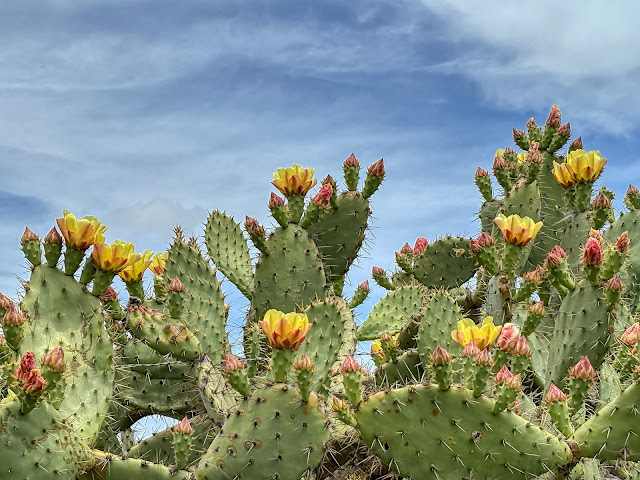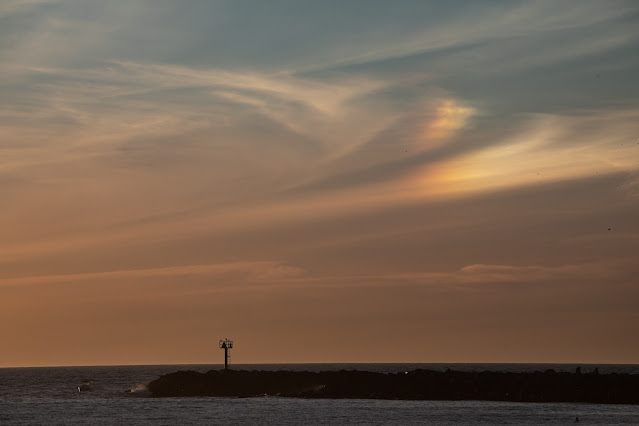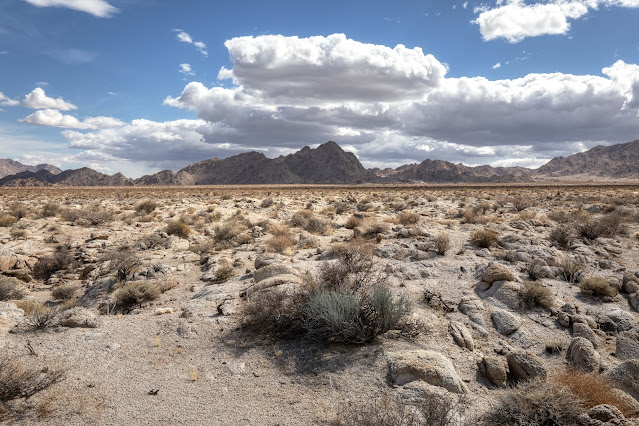Yes, I know. But better late than never! These photos were taken on neighborhood hikes (not desert hikes), but you might notice there are a lot of cactus.
If you're really astute, you might notice all the cactus in this post are the same species (I call them prickly pear cactus).
The spiny "pads" are useful for other things. I know they can be eaten, although I've never understood how one goes about safely removing all the very sharp and painful thorns. Discouraging people from walking on a closed trail is a new one on me!
 |
| Less common but just as beautiful are the orange flowering prickly pear. |
Rarest of all are pinkish-red blooms. I've never seen an entire plant covered with red blooms. Only like the photo above, where there is a mix of red and yellow blooms on the same plant.
There are certainly many plants besides prickly pear that are flowering. I think the tree on the right is Elderberry, and it's also flowering.
The red-orange flowers are from sticky monkey-flower. These flowers range from orange to bright red, and can sometimes dominate an entire meadow or hillside.
I came across a large group of California Digger Bees. They construct nests beneath the soil and are active when plants are blooming. They are very mellow and not at all aggressive. They almost never sting, and have even been nicknamed "tickle bees". They are important pollinators of native wildflowers and contribute to the health and diversity of local ecosystems. If you come across Digger Bees while out hiking, please don't step on their burrows!
The red-orange flowers are from sticky monkey-flower. These flowers range from orange to bright red, and can sometimes dominate an entire meadow or hillside.
 |
| The tubular yellow flowers are tree tobacco, with sticky monkey-flower in the background. |
I came across a large group of California Digger Bees. They construct nests beneath the soil and are active when plants are blooming. They are very mellow and not at all aggressive. They almost never sting, and have even been nicknamed "tickle bees". They are important pollinators of native wildflowers and contribute to the health and diversity of local ecosystems. If you come across Digger Bees while out hiking, please don't step on their burrows!
 |
| Western fence lizard... on a fence railing, of course! |
When I come across the Basque shepherd sculpture, I know I'm nearing the end of my hike. I posted this photo on Facebook, and a friend asked "Where's the dog?". So on my next hike, I had to stop and take a picture with the dog.
 |
| Good boy! |
Thanks for stopping by!
Linking with Skywatch Friday.























































